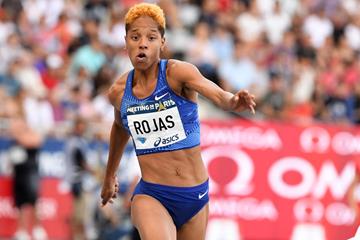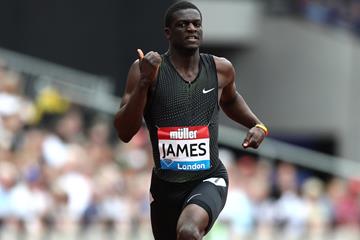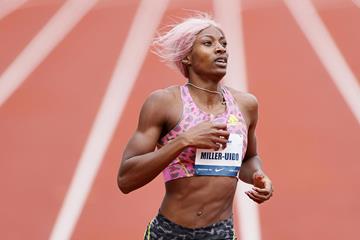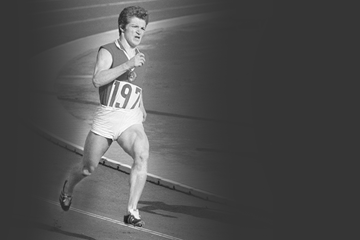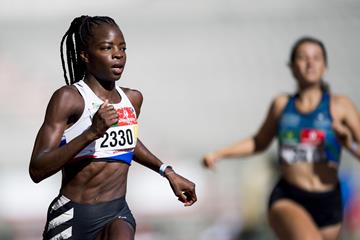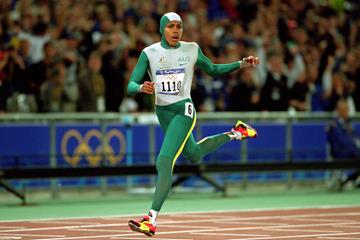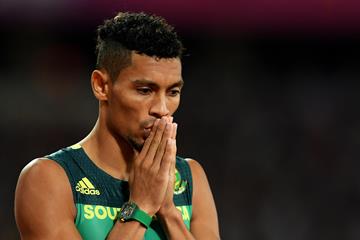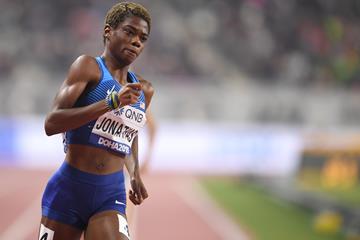 Countdown
Countdown
 Countdown
Countdown
The 400m is a track event in which athletes complete one lap of a standard outdoor 400m athletics track while running in a designated lane. Indoors, athletes complete two laps of a standard indoor 200m track. Often referred to as the one-lap race or the long sprint, the 400m sprint and the 400m dash, the winner of this race is the athlete who crosses the finish line in the fastest time.
The modern event evolved from the ‘diaulos’, a two-mark race that was contested at the Ancient Olympics – this length was akin to 400 metres
The men’s 400m has been contested at every modern Olympics – the first modern Games were held in 1896
The women’s 400m made its Olympic debut in 1964
The event has produced iconic Olympic moments, from Eric Liddell’s ‘Chariots of Fire’ victory in 1924 to Wayde van Niekerk’s world record-breaking performance in 2016
One of the most famous women’s Olympic wins occurred in 2000, when Cathy Freeman claimed gold – a record seven million Australians tuned in to watch
Marlene Matthews (Australia) set the inaugural women’s 400m world record in 1957 of 57.0 seconds. Two years later, in 1959, Mariya Itkina (Soviet Union) beat Matthews by 3.6 seconds (53.4).
Over the next two decades, a global pool of runners set new records. North Korea’s Shin Geum-Dan was the first female to complete the 400 metres in under 52 seconds (51.9 in 1962). The next benchmarks were achieved by Jamaica’s Marilyn Neufville (51.0 in 1970), Poland’s Irena Szewinska (49.9 in 1974) and East Germany’s Marita Koch (48.94 in 1978).
After winning gold at the 1980 Olympics, Koch achieved the current outdoor world record of 47.60 in 1985.
Dutch athlete Femke Bol – the world champion in the 400m hurdles – holds the world record for the 400m indoors. After running 49.26 in Apeldoorn in 2023, she improved the world record to 49.24 on the same track a year later and then went even faster, setting the current world indoor 400m record of 49.17 when winning the world indoor title in Glasgow in March 2024.
Charles Reidpath (United States) achieved the first official men’s 400m world record. He set the standard with a time of 48.2 seconds in 1912. Four years later, fellow US athlete Ted Meredith completed the first sub-48.00 time (47.4 in 1916).
Records were scant over the next 15 years. Finally, in 1932, Ben Eastman (United States) broke through the 47-second barrier (46.4 in 1932). The next milestone was accomplished by Herb McKenley (Jamaica) with a time of 45.9 (1948). He was followed by Otis Davis (United States) and Carl Kaufmann (Germany), with their joint record of 44.9 (1960).
Next, in 1968, Lee Evans (United States) became the first men’s 400m runner to secure a time below 44 seconds. Evans produced a run of 43.86 seconds, a feat he achieved at altitude.
During the 1980s and 90s, Butch Reynolds and Michael Johnson (United States) made further improvements to the men’s 400m world record.
Two-time world champion (2015, 2017) Wayde van Niekerk (South Africa) set the current outdoor 400m world record at the 2016 Olympics, when he ran the race in 43.03.
USA’s Kerron Clement is the men’s world record-holder for the 400m indoors. He ran 44.57 in Fayetteville in 2005.
Often described as the ‘long sprint’, the 400m is an acid test of sprint endurance. The greatest 400m runners are capable of explosive acceleration and incredible velocity.
Overall, the United States has produced more men’s global 400m gold medallists than any other nation. In total, their male athletes have claimed 19 Olympic gold medals in the 400m.
Only three 400m sprinters have won back-to-back Olympic titles: US great Michael Johnson (1996, 2000), French icon Marie-Jose Perec (1992, 1996) and gifted Bahamian Shaunae Miller-Uibo (2016, 2021).
Johnson is considered to be one of the greatest 400m runners of all time. He was the first male athlete to win the 200m and the 400m at the same Olympics (1996). Johnson also won four world titles in the 400m (1993, 1995, 1997, 1999).
Perec is also a two-time world Champion (1991, 1995). In addition to her two Olympic golds, Miller-Uibo won two Diamond League titles in 2017: one for the 2oom and one for the 400m. She also won the indoor and outdoor world titles in 2022.

Like any track and field event, the 400m technique incorporates a range of elements and skills. Here is how to run the 400m:
Runners begin the 400m in the starting blocks. These blocks are staggered, with athletes positioned at different points around the track. Proper set up and positioning are crucial for a strong start. To achieve the best acceleration, athletes should place their strongest leg in the front starting block.
The runner’s hands should be positioned on the track, shoulder width apart. The athlete distributes their weight by spreading their fingers and thumbs.
From the initial position in the blocks, the runner must prepare for the commands: ‘on your marks’ and ‘set.’ When hearing ‘on your marks,’ the athlete should lift their front knee to their elbow. The runner enters the ‘set’ position by pushing their feet against the blocks and raising their hips above shoulder height.
Athletes start the race when the starting pistol is fired.
Taking off requires power and control. The runner pushes off from the block, propels with their arms and sprints with their legs fully extended. Motion is driven by the hips and athletes should maintain a 45-degree angle from the ground.
However, although an explosive start is important, an athlete must not start the race too soon, as this is a false start. If the reaction time of a competitor – measured by sensors in the starting pistol and the blocks – is less than 0.1 seconds, they are disqualified.
Speed is essential for achieving great times. The first 50-70 metres is known as the velocity zone, in which the athlete builds momentum as quickly as possible. The second 130-metre section is the cruise zone. Once in this second phase, an athlete should work on maintaining their speed and form while also conserving energy.
At the halfway point of the race, each athlete should again look to accelerate while also preparing for the final sprint.
With 150 metres remaining, the runner redoubles their efforts. They swing their arms upward to increase momentum and drive towards the finish line. As they draw closer, the athlete leans forward to secure their finish.
The 400m is governed by a set of rules. They include:
Athletes must begin the race in the starting blocks
The race commences with the commands ‘on your marks,’ ‘set,’ and the starting pistol
Runners must remain in their designated lanes throughout the race
Competitors must not obstruct, impede or interfere with other runners
Time is stopped when the athlete’s torso (not the head, arms, legs or feet) crosses the finish line
Official times are recorded using automatic timing systems to one-hundredth of a second
There are a number of ways competitors can be disqualified in the 400m. The most common include false starts and lane infringements (more than one step on the inner lane line).
A good 400m time varies depending on performance level, age and sex. For example, elite male athletes aim for a time of sub-45 seconds, while elite female athletes work towards a target of sub-50 seconds.
The best way to train for the 400m includes a mix of speed work, endurance training, strength conditioning and technique drills. Workouts that incorporate interval training and sprints are particularly beneficial.
 BOT
BOT
 BOT
BOT
 USA
USA
 USA
USA
 RSA
RSA
 TTO
TTO
 GBR
GBR
 GBR
GBR
 USA
USA
 ZAM
ZAM
 DOM
DOM
 BRN
BRN
 USA
USA
 GBR
GBR
 NOR
NOR
 POL
POL
 USA
USA
 JAM
JAM
 NED
NED
 CHI
CHI
